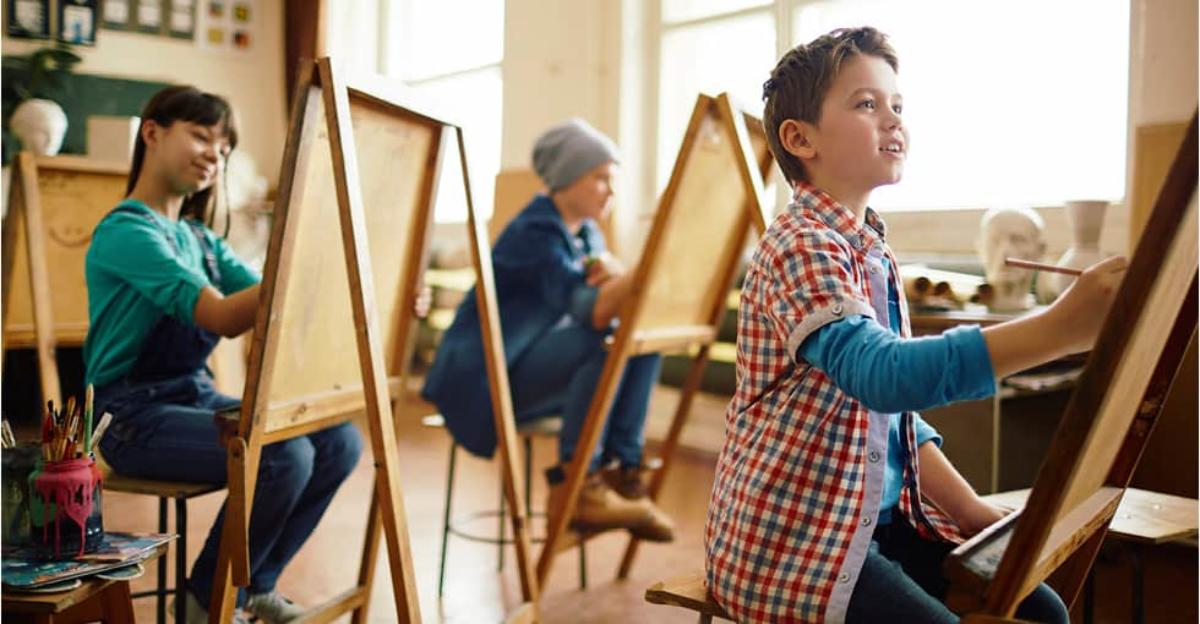The goal of every art teacher is to turn their classroom into a group of young artists. You may have noticed, however, that not all of your students are automatically drawn to art. If you have trouble with art engagement for all the students in your elementary school class, don’t worry. Below we’ll discuss several ways to make your projects interesting to the reluctant artists in your charge.
1. Tie Art to Another Subject
Many students don’t love art on its own, but will jump at the chance to pursue science or technology subjects. This is a great chance for you to help with the revolution from STEM (science, technology, engineering and mathematics) to STEAM (which incorporates art and design). In that case, painting a night sky that represents the constellations or creating a papier-mâché model of the solar system can do the trick. Others love animals, books or fashion. Get to know your students’ interests, then use their natural loves as a gateway to exploring them through art.
2. Help Kids Design the Project
Perhaps you want to focus on a particular art technique – pointillism, say, or impasto. Explain to the kids how the technique works, then let them help you design the project you’ll do. What materials will you use? What paper? What will you try to create? Giving kids some agency can do wonders for their interest levels.
3. Lean Heavily on Imagination
Many children, object to art merely for art’s sake. They can’t get into the idea of making something pretty or pleasing to the eye just to do it. They do, however, get really excited about making artwork that reflects their imaginations. Consider, for instance, a lesson called “Create Your Own Creature.” In this, children use paper, odds and ends, toilet paper tubes, glue, beads and other doodads to build an imaginary or mythical creature from scraps. The result? They’ve made art without even knowing it.
4. Provide Alternatives
Sometimes a kid doesn’t take to painting or drawing, but loves more tactile pursuits such as sculpture. Or perhaps they don’t like getting their hands messy (this is often the case for kids on the autism spectrum), but will happily engage in projects that involve drawing or coloring. Sometimes providing an alternative to the project can help you catch the interest of all.
Meeting the needs of every kid in your art room may not be easy, but by digging deep into your bag of problem-solving tricks, you can find ways to engage with every student and help foster a love of art in all of them.






Leave a Reply